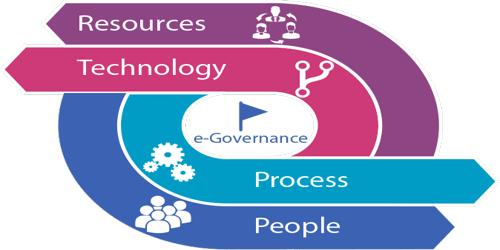Electronic governance or e-governance is the application information and communication technology (ICT) for delivering government, exchange of information communication transactions, integration of various stand-alone systems and services between government-to-customer (G2C), government-to-business (G2B), government-to-government (G2G) as well as back-office processes and interactions within the entire government framework. Through e-governance, government services will be made available to citizens in a convenient, efficient and transparent manner. The three main target groups that can be distinguished in governance concepts are government, citizens and businesses/interest groups. In e-governance, there are no distinct boundaries. The basic purpose of e-governance is to simplify processes for all, i.e. government, citizens, businesses, etc. at National, State, and local levels.
Generally, four basic models are available – government-to-citizen (customer), government to-employees, government-to-government, and government-to-business.
The term e-Government is understood differently across the world. E-Government or Electronic Government is the delivery of more convenient, customer-oriented and coat effective public services and sharing of information through electronic media. Specifically, e-Government harnesses information and communication technologies (such as Wide Area Networks, the Internet, and mobile computing) to transform relations with citizens, businesses, and other arms of government. It refers to any government process or function that is out online in digital form.














